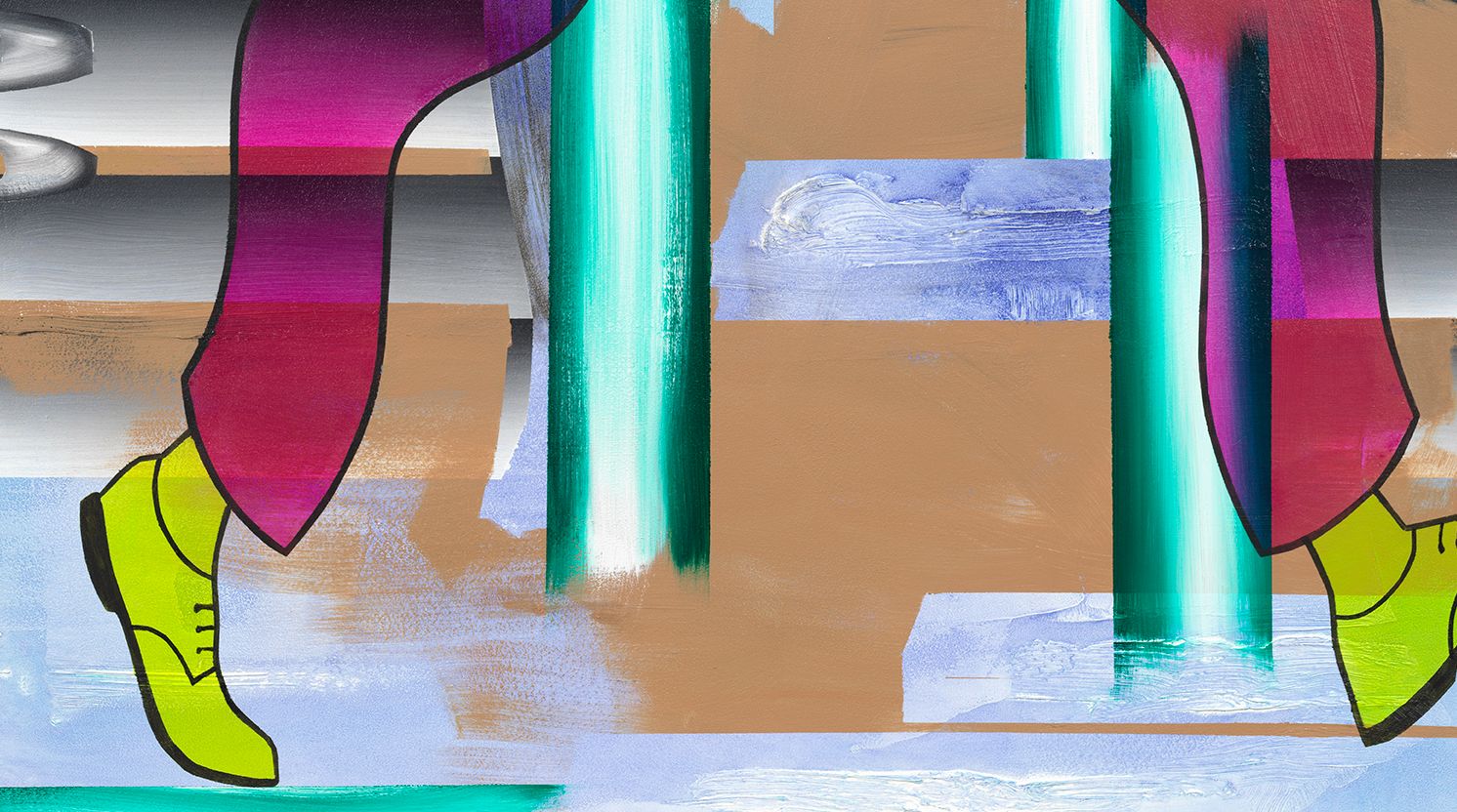The art of Sonia Almeida and Baseera Khan makes palpable the concatenation of meaning on the gendered body. Almeida’s nuanced painting practice has investigated through the years the deceptive powers of vision and the various manners in which communicative systems break down. Her most recent paintings situate these urgent observations on the female body. Khan’s work exists in the intersection of Conceptualism, performance, sculpture, and feminism. Each piece is foregrounded in her experience of navigating the world as a self-identified femme, Muslim woman. She locates on her body the societal vision of her subjectivity, how her skin, like the surfaces of Almeida’s paintings, become the medium for the accrual of an array of symbolic meaning. For Liste 24, we will present a new series of paintings by Almeida and a new collection of object-based pieces and photographic works by Khan.
Almeida’s latest double-sided paintings on fabric allow the viewer to visually edit the imagery they see; by physically moving their body around the hanging picture plane, a viewer angles their perception of the work. Like many of Almeida’s more sculptural paintings, it is intentionally made impossible to view the entire piece at once. The depictions in each piece are subtle, layered, and compellingly deceptive, which enables Almeida to play with the interpretive movement between visual and linguistic representations. She has, for instance, emphasized distilled depictions—think Matisse cut outs—of androgynous figures that read feminine, contorting them into a shape of a letter (i.e “z” or “h”). The represented body becomes an exercise in the viewer’s interpretive activities, transforming Almeida’s codes into a gendered form that functions no differently than any mere linguistic symbol. Almeida reveals how gestures, whether pictorial, bodily, or linguistic predicate thought and speech, and makes one’s identity a function of representational systems.
Khan’s multivalent practice take the body, especially her own, as the locus of her investigation into how subjectivity is shaped and threatened by social environments and capitalist systems. Much of this inquiry revolves around works that address the experience of being surveilled and how this coincides, in the case of Khan, with the construction of gender and her Muslim identity. Khan’s art at its core is both political and poetic. She melds a diverse range of themes from sub-genres of indie rock to interpretations of the Quran, something one sees in her Psychedelic Prayer Rugs (2017) as well as her Acoustic Sound Blankets, which are like a Parangolés by Hélio Oiticica but made of dark acoustic blankets in which the cut out hole for one’s head is surround by detailed embroidery of patterns passed down by women in Khan’s family. In all that Khan does, cross-cultural and postcolonial themes predominate. It makes for a remarkably cosmopolitan and contemporary way of seeing things, where identity resists fixed locations and gender remains a flux, both mutable systems always available to re-conceive and perform.




